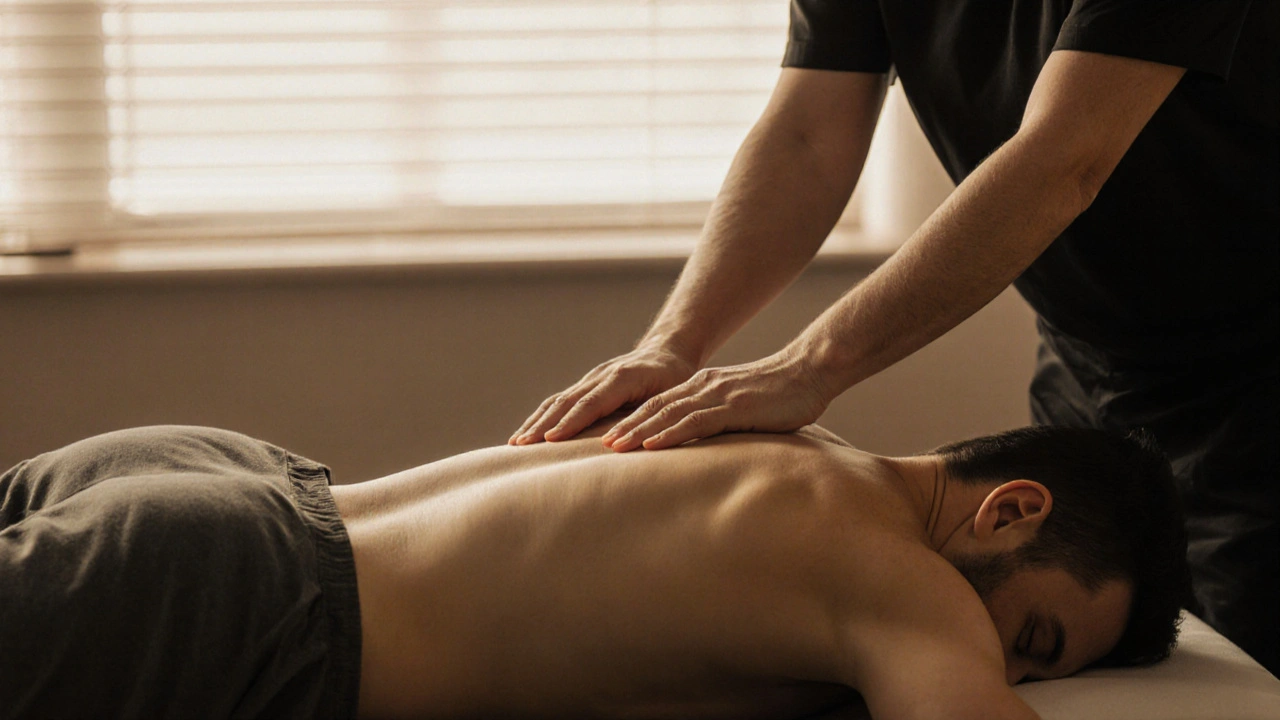Myofascial Release Therapy: A Practical Guide
Tired of muscle pain that keeps coming back? Myofascial release therapy targets the fascia—the thin web of tissue that wraps your muscles—and can unlock tight spots that standard massage misses. It's focused, slow, and often helps with long-standing stiffness and movement limits.
Therapists use sustained, gentle pressure and long holds instead of quick rubbing. They look for patches of tissue that feel stuck or thick and apply steady pressure until the fascia eases. That slow work can change how your muscles and joints move, reduce nerve tension, and lower pain signals. Sessions can feel strange at first—mild soreness, warmth, or a deep release—but many people get clearer movement and less pain afterward.
What to expect during a session
Expect a short intake where the therapist asks about your pain, sleep, and daily posture. They’ll watch you move, feel the soft tissue, and target areas that limit motion. You’ll usually stay clothed; the therapist keeps hands on a spot for a minute or more until the tissue softens. Sessions run 30–60 minutes depending on the problem. For chronic pain, most people need multiple visits over weeks. Be honest about medical issues and comfort—good therapists adapt pressure and technique to your needs.
Who benefits? People with neck or low-back pain, headaches, frozen shoulder, plantar fasciitis, scar tightness after surgery, and posture-related problems often see gains. If trigger point or deep-tissue work hasn’t helped, myofascial release can reach layers those methods miss. It also fits well with movement work like Feldenkrais, gentle yoga, or posture training to lock in progress.
At-home moves and simple routines
Keep improvements between visits with a few safe habits. Use a soft ball or foam roller slowly on tight spots—one to three minutes per area—rolling gently, not bashing. Try short range-of-motion movements: move a joint slowly through its comfortable arc instead of forcing length. Hydrate; fascia responds better when you drink water. Fix small daily habits: raise your screen to avoid slouching, swap a pillow if your neck tilts badly, and take short movement breaks every hour.
Try a practical example: for tight glutes, sit on a soft ball and lean into the sore spot with your body weight for 60–90 seconds, breathing steadily until it eases, then move the ball slightly and repeat. For plantar tightness, roll a small bottle or ball under your foot while seated. These mini-sessions add up.
Safety first: avoid myofascial work if you have an active infection, recent fracture, deep vein thrombosis, or uncontrolled bleeding. Pregnant people should see a therapist trained in prenatal care. If you’re on blood thinners or have major health issues, check with your doctor first.
Choosing a therapist matters. Look for specific myofascial training, clear communication, and homework you can do at home. Progress usually comes from combining hands-on work with better posture, gentle strengthening, and regular movement—small, steady steps beat one big treatment. If pain keeps you stuck, myofascial release is a practical option worth trying.

Why Myofascial Release Therapy Could Be Your Answer to Chronic Pain
Myofascial release therapy targets tight connective tissue to relieve chronic pain that doesn't respond to traditional treatments. Learn how it works, who benefits, and how to find the right practitioner.

Myofascial Release Therapy: How It Relieves Chronic Pain and Why It’s Gaining Traction
Myofascial release therapy targets tight connective tissue to relieve chronic pain that other treatments miss. Learn how it works, who benefits most, and how to find a qualified therapist in Australia.

Myofascial Release Therapy: The New Era of Healing
Discover how myofascial release therapy works, its benefits, session expectations, practitioner tips, and at‑home care for lasting pain relief.
Categories
- Health and Wellness (148)
- Alternative Therapies (86)
- Massage Therapy (40)
- Travel and Culture (15)
- Beauty and Skincare (9)
- Holistic Health (8)
- Health and Fitness (5)
- Spirituality (5)
- Other (2)
- Personal Development (2)
Popular Articles



